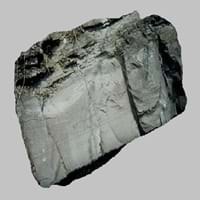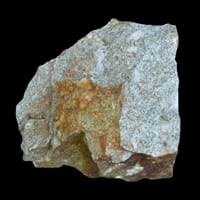Turbidite and Tonalite
Definition
Definition
A sedimentary rock, deposit of a submarine turbidity currents and are composed of layered particles
Tonalite is a coarse-grained plutonic rock consisting mainly of sodic plagioclase, quartz, and hornblende or other mafic minerals with phaneritic texture
History
Origin
European Foreland Basins
Tonale, Italy
Discoverer
Arnold H. Bouma
Unknown
Etymology
From Medieval Latin turbiditas, from Latin turbidus (turbid). Turbidity current is from 1939
From Tonale Pass, northern Italy, + -ite1
Class
Sedimentary Rocks
Igneous Rocks
Sub-Class
Durable Rock, Soft Rock
Durable Rock, Hard Rock
Family
Group
Not Applicable
Plutonic
Other Categories
Coarse Grained Rock, Fine Grained Rock, Opaque Rock
Coarse Grained Rock, Fine Grained Rock, Medium Grained Rock, Opaque Rock
Texture
Texture
Mud-rich, Sandy
Phaneritic
Color
Black, Brown, Colourless, Green, Grey, Pink
Black, Brown, Light to Dark Grey, White
Maintenance
Less
Less
Durability
Durable
Durable
Water Resistant
Yes
Yes
Scratch Resistant
Yes
Yes
Stain Resistant
No
Yes
Wind Resistant
Yes
No
Acid Resistant
No
Yes
Appearance
Dull and Banded
Banded and Foilated
Uses
Architecture
Interior Uses
Bathrooms, Countertops, Decorative Aggregates, Flooring, Homes, Interior Decoration
Decorative Aggregates, Entryways, Flooring, Homes, Interior Decoration
Exterior Uses
As Building Stone, As Facing Stone, Paving Stone, Garden Decoration
As Building Stone, As Facing Stone, Paving Stone, Garden Decoration, Office Buildings
Other Architectural Uses
Curbing
Curbing
Industry
Construction Industry
As Dimension Stone, Cement Manufacture, Construction Aggregate, for Road Aggregate, Making natural cement
As Dimension Stone, Cement Manufacture, Cobblestones, Construction Aggregate, for Road Aggregate
Medical Industry
Not Yet Used
Not Yet Used
Antiquity Uses
Artifacts, Monuments, Sculpture
Artifacts, Sculpture
Other Uses
Commercial Uses
Cemetery Markers, Creating Artwork
Cemetery Markers, Creating Artwork
Types
Types
Not Available
Dacite
Features
High silica content, Host Rock for Lead
Is one of the oldest rock, Typically speckled black and white.
Archaeological Significance
Monuments
Used
Not Yet Used
Famous Monuments
Data Not Available
Not Applicable
Sculpture
Used
Used
Famous Sculptures
Data Not Available
Data Not Available
Pictographs
Used
Not Used
Petroglyphs
Used
Not Used
Figurines
Used
Used
Fossils
Present
Absent
Formation
Formation
Turbidite is a type of sedimentary rock formed when a river carries or transports pieces of broken rock as it flows. These particles then settle down and are subjected to high temperature and pressures hence forming Turbidite.
When alkali feldspar is extracted from granite, it changes to granitoid and later, it becomes tonalite with quartz as major mineral.
Composition
Mineral Content
Coesite, Quartz, Sand
Albite, Amphibole, Apatite, Biotite, Feldspar, Hornblade, Ilmenite, Magnetite, Manganese Oxides, Olivine, Plagioclase, Pyroxene, Quartz, Sulfides, Titanite, Zircon
Compound Content
CaO, Carbon Dioxide, MgO
NaCl, CaO, MgO, Silicon Dioxide
Transformation
Metamorphism
No
Yes
Types of Metamorphism
Not Applicable
Burial Metamorphism, Cataclastic Metamorphism, Contact Metamorphism, Hydrothermal Metamorphism, Impact Metamorphism, Regional Metamorphism
Weathering
Yes
Yes
Types of Weathering
Biological Weathering, Chemical Weathering, Mechanical Weathering
Biological Weathering, Chemical Weathering, Mechanical Weathering
Erosion
Yes
Yes
Types of Erosion
Chemical Erosion, Coastal Erosion, Sea Erosion, Water Erosion, Wind Erosion
Wind Erosion
Properties
Physical Properties
Hardness
3
6-7
Grain Size
Fine to Coarse Grained
Medium to Fine Coarse Grained
Fracture
Splintery
Conchoidal
Streak
White, Greenish White or Grey
Bluish Black
Porosity
Very Less Porous
Very Less Porous
Luster
Metallic
Subvitreous to Dull
Compressive Strength
200.00 N/mm2
10
Not Available
Cleavage
Disjunctive
Not Available
Toughness
2.4
2.1
Specific Gravity
2.46-2.73
2.86-3
Transparency
Opaque
Opaque
Density
1.6-2.5 g/cm3
2.73 g/cm3
Thermal Properties
Specific Heat Capacity
0.92 kJ/Kg K
10
0.92 kJ/Kg K
10
Resistance
Heat Resistant
Heat Resistant, Pressure Resistant, Water Resistant
Reserves
Deposits in Eastern Continents
Asia
Not Yet Found
Not Yet Found
Africa
Western Africa
Egypt
Europe
Austria, Belarus, Romania, Switzerland, United Kingdom
Finland, Germany, Italy, Romania, Sweden, Turkey
Others
Not Yet Found
Not Yet Found
Deposits in Western Continents
North America
Canada, USA
USA
South America
Brazil, Colombia
Argentina, Bolivia, Chile, Colombia, Ecuador, Peru
Deposits in Oceania Continent
Australia
New Zealand, Western Australia
New Zealand, South Australia, Western Australia
All about Turbidite and Tonalite Properties
Know all about Turbidite and Tonalite properties here. All properties of rocks are important as they define the type of rock and its application. Turbidite belongs to Sedimentary Rocks while Tonalite belongs to Igneous Rocks.Texture of Turbidite is Mud-rich, Sandy whereas that of Tonalite is Phaneritic. Turbidite appears Dull and Banded and Tonalite appears Banded and Foilated. The luster of Turbidite is metallic while that of Tonalite is subvitreous to dull. Turbidite is available in black, brown, colourless, green, grey, pink colors whereas Tonalite is available in black, brown, light to dark grey, white colors. The commercial uses of Turbidite and Tonalite are cemetery markers, creating artwork.
|
||
|
||
|










